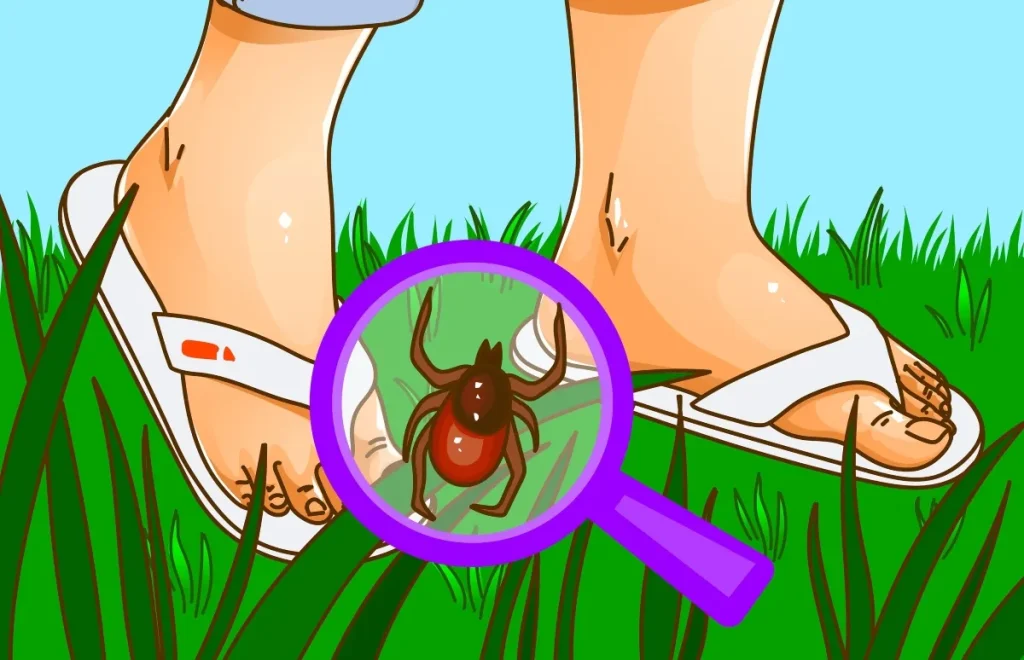Blacklegged ticks, also known as deer ticks, are notorious carriers of Lyme disease and other harmful pathogens. As warmer weather approaches and outdoor activities become more frequent, it’s crucial to arm yourself with knowledge on how to effectively defend against these tiny but potentially dangerous pests. In this comprehensive guide, we’ll explore practical tips and strategies to help you master tick defense and enjoy the great outdoors with peace of mind.
Understanding the Enemy: Blacklegged Ticks
Before delving into tick defense strategies, it’s essential to understand your adversary. Blacklegged ticks are small arachnids commonly found in wooded areas, tall grasses, and leaf litter. They typically feed on the blood of mammals, birds, and sometimes reptiles. These ticks are notorious for transmitting Lyme disease, but they can also carry other pathogens such as babesiosis, anaplasmosis, and the Powassan virus.
Tip 1: Dress Appropriately
One of the most effective ways to defend against black-legged ticks is to dress appropriately when venturing into tick-prone areas. Wear light-colored clothing to make it easier to spot ticks and long-sleeved shirts and long pants tucked into socks or boots to minimize skin exposure. Additionally, consider treating your clothing and gear with permethrin, an insect repellent specifically designed to repel ticks.
Tip 2: Use Insect Repellents
Insect repellents containing DEET, picaridin, or oil of lemon eucalyptus can provide added protection against black-legged ticks. When applying repellent, be sure to follow the instructions on the label and reapply as necessary, especially if you’re sweating heavily or spending extended periods outdoors.
Tip 3: Stay on Trails
When hiking or walking in wooded or grassy areas, stick to designated trails whenever possible. Avoid bushwhacking or walking through dense vegetation where ticks are more likely to be present. By staying on trails, you can reduce your risk of coming into contact with ticks and lower the chances of them latching onto you.
Tip 4: Perform Regular Tick Checks
After spending time outdoors, especially in areas known to have ticks, it’s crucial to perform thorough tick checks on yourself, your children, and your pets. Pay close attention to areas where ticks are likely to hide, such as the scalp, behind the ears, along the hairline, underarms, groin, and behind the knees. If you find a tick attached to your skin, remove it promptly using fine-tipped tweezers, grasping the tick as close to the skin’s surface as possible and pulling upward with steady, even pressure.
Tip 5: Create a Tick-Safe Zone
If you have a yard or outdoor living space, consider creating a tick-safe zone by implementing landscaping practices that discourage tick habitat. This may include keeping grassy areas mowed short, removing leaf litter and brush piles, and creating a barrier of wood chips or gravel between wooded areas and your lawn. Additionally, consider installing fencing to keep out deer and other wildlife that can carry ticks into your yard.
Tip 6: Protect Your Pets
Ticks can also pose a threat to your furry companions, so it’s essential to take steps to protect them as well. Talk to your veterinarian about tick prevention products such as topical treatments, collars, or oral medications that can help keep ticks at bay. Additionally, perform regular tick checks on your pets, especially after they’ve been outdoors, and promptly remove any ticks you find.
Tip 7: Educate Yourself
Knowledge is power when it comes to tick defense. Take the time to educate yourself about the signs and symptoms of tick-borne illnesses, particularly Lyme disease, so you can recognize them early and seek prompt medical attention if needed. Stay informed about current tick activity in your area and any emerging threats posed by ticks and tick-borne diseases.
In Conclusion
Achieving mastery over tick defense demands a blend of knowledge, readiness, and attentiveness. By grasping the behavior patterns and preferred habitats of black-legged ticks and employing preemptive measures to evade potential encounters, you can notably diminish the likelihood of tick bites and subsequent tick-borne ailments.
It’s imperative to dress suitably, utilize insect repellents, adhere to marked trails, conduct routine tick inspections, establish a tick-safe area in your outdoor space, safeguard your pets, and stay abreast of developments in tick-borne illnesses. Additionally, understanding the symptoms and seeking prompt medical attention, including hyperthermia treatment for Lyme disease, enhances your defensive arsenal.
Armed with these strategies, you can relish outdoor pursuits with assurance, knowing that you’re proactively shielding yourself and your loved ones from the perils posed by black-legged ticks and the diseases they transmit.

